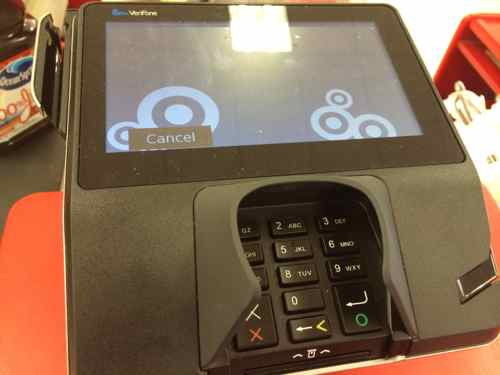Readers Use Plastic (Debit/Credit) For Most Purchases
You may have heard the phrase “Cash is King” before, but it doesn’t refer to paper or coin currency:
The belief that money (cash) is more valuable than any other form of investment tool. The “cash is king” phrase is typically used when prices in the securities market are high and investors decide to save their cash for when prices are cheaper. It can also refer to the balance sheet or cash flow of a business; a lot of cash on hand is normally a positive sign, while strong cash flow allows a company more flexibility in regards to business decisions and potential investments. (Investopedia)
Currency is being replaced with plastic and digital money, just in time too:
In 2013, the cost of making pennies and nickels exceeded their face value for the eighth year in a row. The cost of minting a penny stood at 1.8 cents, nearly twice its face value. Nickels cost twice as much as dimes – 9.4 cents vs. 4.6 cents – despite being worth only half as much. (The Washington Post)
How does this compare to paper currency?
Each year, the Federal Reserve Board projects the likely demand for new currency, and places an order with the Department of the Treasury’s Bureau of Engraving and Printing, which produces U.S. currency and charges the Board for the cost of production. The new-currency budget for 2014 is $826.7 million, and reflects the following costs per denomination:
- $1 and $2 = 5.4 cents per note
- $5 = 10.1 cents per note
- $10 = 9.2 cents per note
- $20 and $50 = 10.2 cents per note
- $100 = 13.1 cents per note (source: Federal Reserve)
A nickel costs more to make than a dollar and ten dollar notes? Over $800 million per year to create the physical currency some use?
As of July 2013, currency in circulation—that is, U.S. coins and paper currency in the hands of the public—totaled about $1.2 trillion dollars. The amount of cash in circulation has risen rapidly in recent decades and much of the increase has been caused by demand from abroad. The Federal Reserve estimates that the majority of the cash in circulation today is outside the United States. (Source: Federal Reserve)
Many still use cash, but the numbers are shrinking:
The national telephone survey of 983 adult U.S. credit card holders found that 1 in 3 usually uses a credit card or a debit card for in-person purchases of less than $5. The breakdown: 11 percent prefer credit cards, 22 percent debit cards, 65 percent cash.
But the generational divide is striking. A slight majority (51 percent) of consumers 18-29 prefer plastic to cash, the only age group to do so. A preference for cash becomes stronger in each advancing age bracket, until at age 65-plus, 82 percent prefer cash. (CreditCards.com)
Here’s another look:
While credit and debit cards represent more than half of the purchases made for retail goods and services in the U.S., cash continues to dominate in small transactions. A recent consumer survey conducted by the Federal Reserve found that cash represented 66% of transactions under $10 and 58% of transactions under $25. When the transaction was more than $50, cash was used in less than 20% of the payments. (Wall Street Journal)
It was the above statistics on cash use that prompted the poll last week, here are the results:
Q: What size purchase would you use cash versus plastic (debit/credit)?
- No amount, I use plastic for most purchases 49 [55.06%]
- Cash for $20 or less 13 [14.61%]
- Cash for $5 or less 11 [12.36%]
- Cash for $10 or less 9 [10.11%]
- Any amount, I use cash for most purchases 6 [6.74%]
- Unsure/No Answer 1 [1.12%]
- Cash for $15 or less 0 [0%]
The results make me wonder if location (urban vs suburban vs rural) has a role in cash vs plastic use? Income & education level? Include me among the 55% that use plastic for nearly every purchase, regardless of amount. I just know I rarely have more than $5 in cash on me, only for emergency stations or the occasional retailer that doesn’t take plastic for sales under some limit.
Despite the shift away from cash, using plastic is far from perfect. Last year many of us got new card numbers after the data breach at Schnucks grocery stores. Since then we’ve seen data breaches from nationwide retailers like Target, Neiman Marcus, and recently Home Depot.
That’s the risk of using debit & credit cards, right? For the moment:
Beginning later next year, you will stop swiping the credit card. Instead, you will insert your card into a slot, just like people do in much of the rest of the world, where the machine will read a microchip, not a magnetic stripe. You’ll still be signing for the time being, but the new system also enables the use of PIN numbers, if card issuers decide to add them to their cards.
The U.S. is the last major market to still use the old-fashioned swipe-and-sign system, and it’s a big reason why almost half the world’s credit card fraud happens in America, despite the country being home to about a quarter of all credit card transactions. (Wall Street Journal)
Yes, we’re the last to use swipe-and-sign. I remember the 80s well when we used carbon slips to get impression of the face of cards, before the back magnetic strip was common.

But this type still isn’t the latest. Soon cards will have a chip imbedded allowing customers to just tap the card at retail stores with appropriate POS (Point of Sale) systems, my Ventra card for Chicago’s transit system has a chip and can be used as a prepaid debit card as well.
Alternatively your physical cards won’t be used, your phone will store the information and use NFC (Near Field Communication) to communicate with the store’s POS. Interesting times ahead.
— Steve Patterson

